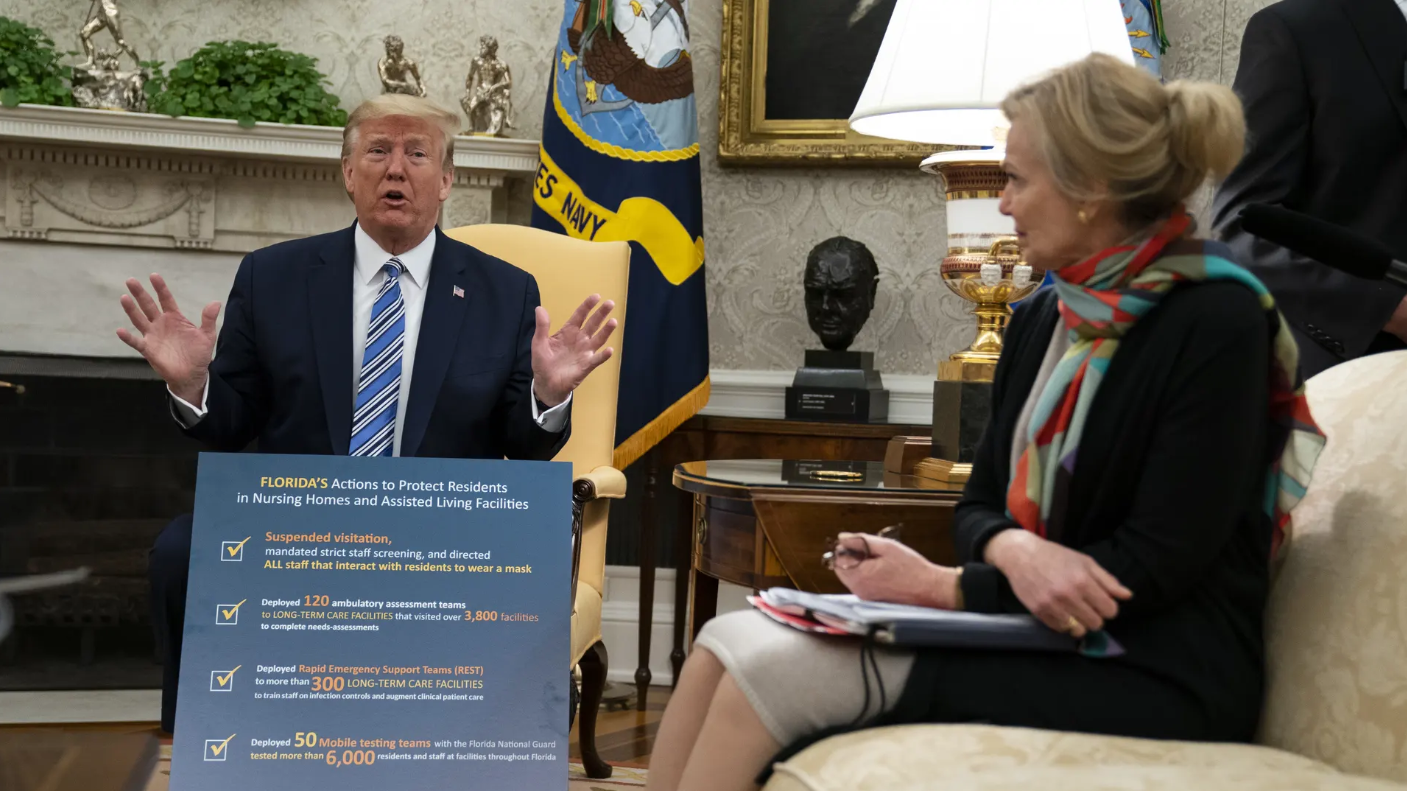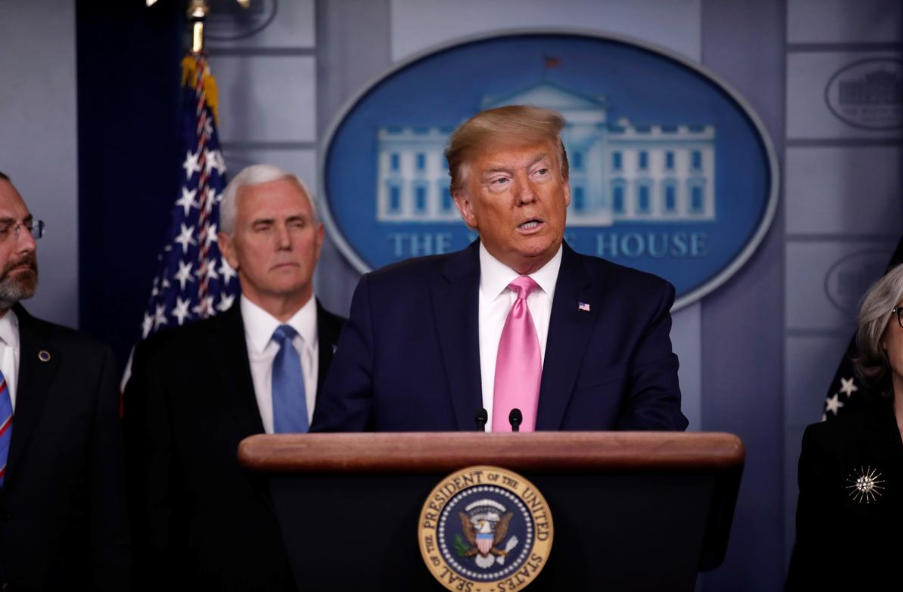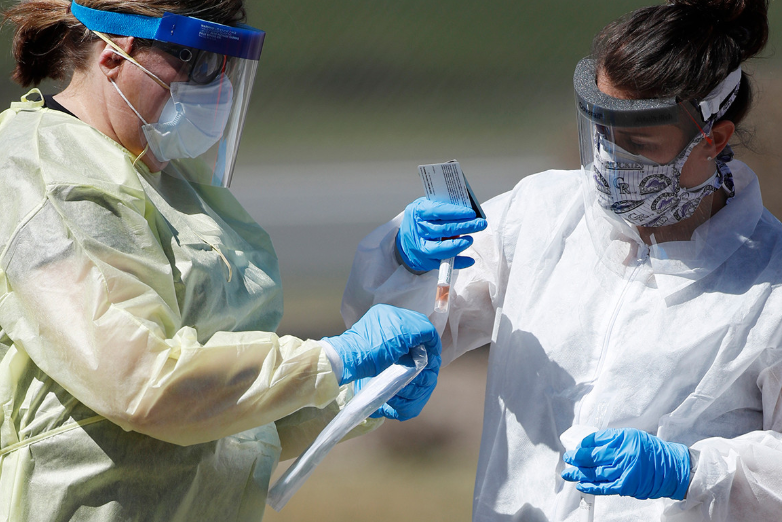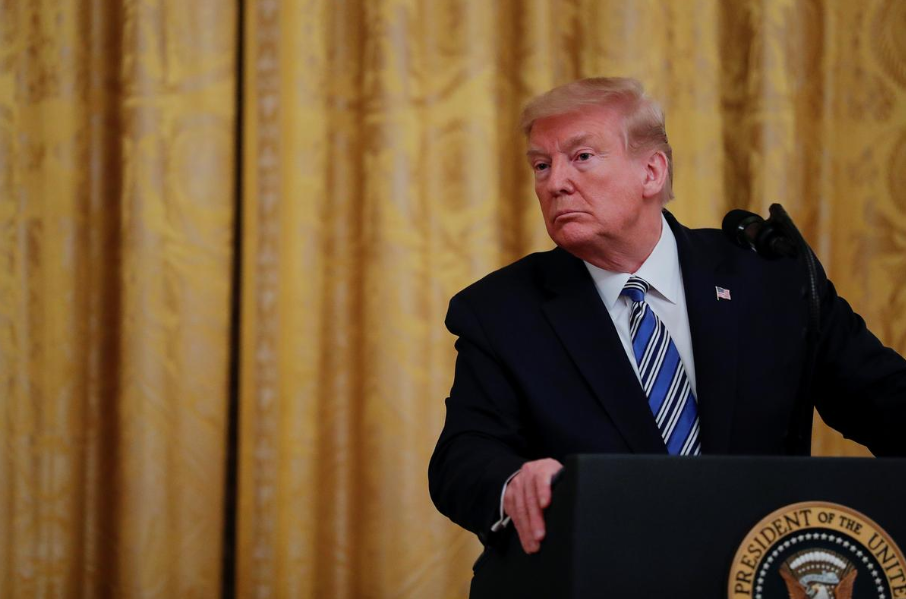As a growing number of states begin to relax restrictions imposed in response to the coronavirus epidemic, concerns with the safety risks involved in such efforts have been raised by Americans. At the center of these concerns is a heated debate over whether states or the federal government should assume a greater role in providing the COVID-19 tests needed for safe reopening.
According to a survey by Pew Research Center, about 61 percent of Americans say the responsibility to provide adequate tests primarily falls upon the federal government, while 37 percent say the task mainly comes under the state authorities' purview.

Response to the poll also indicates a sharp partisan divide, with a predominant majority of Democrats and Democrat-leaning independents (78 percent) attributing the responsibility mainly to the federal government and a slight majority of Republicans and Republican-leaning independents (57 percent) suggesting otherwise.
A small percentage of those either entirely or loosely associated with the blue camp (28 percent) go even further, suggesting that Washington should be exclusively held responsible for the supply of COVID-19 tests.
Yet a majority of Americans placing more responsibility on the federal government seems to contradict what the White House has been arguing.
White House guidelines illustrate wishful thinking
President Donald Trump, whose administration faces mounting criticism over a shortfall in coronavirus testing capacity, has repeatedly stressed that it was the states, rather than the federal government, that were responsible for developing testing capabilities.
In what many argue as an attempt to push responsibility for coronavirus testing on to state governments, the White House last month issued a set of guidelines as reference for states to consider loosening restrictions.
Apart from calling on states to proceed the reopening plan only after showing a "downward trajectory" of COVID-19 cases or positive tests for the disease over 14 days, the guidelines also say individual states may open when the availability of tests to detect the virus is stable or rising.
But as such guidance only serves as non-binding recommendations and ultimately leaves states' fates to governors, it has drawn growing criticism from public officials and health experts throughout the country.
"This isn't a plan. It's barely a power point," Ron Klain, who spearheaded the Obama administration's response to Ebola, said on Twitter, noting it did not include provisions to ramp up testing or set a specific standard for levels of the disease before economic opening.
"The White House's vague and inconsistent document does nothing to make up for the president's failure to listen to the scientists and produce and distribute national rapid testing," House speaker Nancy Pelosi said in a statement.
With the onus on governors, analysts say the plan also gives Trump political cover if not everything goes well.
"They know that the federal response has been a disaster, and so now their strategy is blame 50 states," Ashish K Jha, faculty director of the Harvard Global Health Institute, told The Guardian.
According to Jha, White House officials also personally admitted to him it would be necessary for the federal government to take direct responsibility if the testing capacity was to be exponentially improved, which they also said was needed given an apparent shortfall.
While the guidelines became a point of controversy and Trump's political calculations were increasingly scrutinized, the White House dismissed criticism that the country had not ramped up its testing capacity enough for a safe return to relative normalcy.

U.S. President Donald Trump stands with Vice President Mike Pence and members of his coronavirus task force during a news conference at the White House in Washington, U.S., February 26, 2020. /Reuters
U.S. President Donald Trump stands with Vice President Mike Pence and members of his coronavirus task force during a news conference at the White House in Washington, U.S., February 26, 2020. /Reuters
"We believe today that we have the capacity in the United States to do a sufficient amount of testing for states to move into phase one in the time and manner that they deem appropriate," Vice President Mike Pence said at the daily coronavirus briefing a day after the plan was unveiled.
On top of the stated optimism, the White House has been consistent in encouraging a restoration of American society at press briefings. This propensity, however, raises serious concerns over the Trump administration's wishful thinking.
Instead of sincerely committing itself to clearing away the obstacles that make safe reopenings difficult, Washington has chosen to deflect responsibility while indulging in the idea that governors can sort things out themselves as long as sporadic federal assistance is provided.
With states' reopenings going unsupervised by the federal government, the resulting economic revitalization would be in line with the administration's long-standing policy. Trump, who is basing his reelection campaign on a strong U.S. economy, will certainly reap all the benefits while not being held responsible for taking indiscreet measures that risk a coronavirus resurgence.
But ongoing developments may indicate the falsehood of his assumptions.
Premature reopenings not a good plan for economic relaunch
A recent review conducted by the New York Times determined that most of the states either beginning or planning to allow companies and shops to reopen have failed to meet the criteria laid out in the White House guidelines.
The report came more than half a month after the guidelines were released.
It said only two of the 30 reopening states have conducted daily tests above the minimal level recommended by experts, while the number of tests performed by the remaining states have all fallen short of the advised criteria - approximately 152 daily tests per 100,000 people.

Medical technicians handle a vial containing a nasal testing swab. /AP
Medical technicians handle a vial containing a nasal testing swab. /AP
On top of that, the majority of these states have also failed to adhere to other recommendations as case counts are trending upward and positive test results are rising.
"With so many places opening up before we see indicators of meaningful, sustained transmission declines, there is substantial risk of resurgence," Kimberly Powers, an infectious disease epidemiologist at the University of North Carolina at Chapel Hill, told the New York Times.
"There is no doubt, even under the best of circumstances, when you pull back on mitigation you will see some cases appear," said Dr. Anthony Fauci, the U.S. administration's top infectious disease expert.
He said opening too soon "could turn the clock back," and that not only would cause "some suffering and death that could be avoided, but could even set you back on the road to try to get economic recovery."
Clearly, the likely fate of an outbreak recurrence would strangle the prospect of a smooth economic rejuvenation.
Despite the apparent insufficiency in coronavirus testing and health experts' insistence that millions more tests per week are required to safely reopen the country, Trump, who struck a self-congratulatory tone due to a seemingly high number of conducted tests, said Monday the country has "prevailed on testing".
"America leads the world in testing," he said.
While the number of tests run in the country last week reached approximately 1.9 million, a weekly figure that has indeed surpassed any other nation, the current weekly rate of testing is still well below the level health experts suggest is necessary for a safe reopening.
"Estimates for the number of tests we need range from 3.5 million to tens of millions per week," Caitlin Rivers, a senior scholar at the Johns Hopkins Center for Health Security, testified to Congress last week.
Plan to help the states out
Though Trump's complacency was perhaps unfounded, his remarks coincided with the coronavirus task force's release of an ambitious plan designed to help states increase their testing capacity.

U.S. President Donald Trump speaks during an event in the East Room at the White House in Washington, U.S., April 28, 2020. /Reuters
U.S. President Donald Trump speaks during an event in the East Room at the White House in Washington, U.S., April 28, 2020. /Reuters
The plan envisions a goal of testing 12.9 million people in May and says the federal government will be sending states 12.9 million swabs and nearly 10 million chemical tubes to transport samples. Furthermore, White House officials said 11 billion U.S. dollars will be distributed from the CARES Act to support state testing plans, and states are also being asked to provide updates on their testing strategies and report specific statistics to the federal government within a few weeks.
It is unclear whether the plan indicates Washington's determination to assume a primary role in providing tests needed for the country to reopen, but the Pew poll suggests that Americans would certainly like to see the federal authorities taking more direct responsibility.
(Cover image: Dr. Deborah Birx listens as Donald Trump speaks during a meeting on the coronavirus response with Governor Ron DeSantis of Florida, April 28, 2020. /AP )